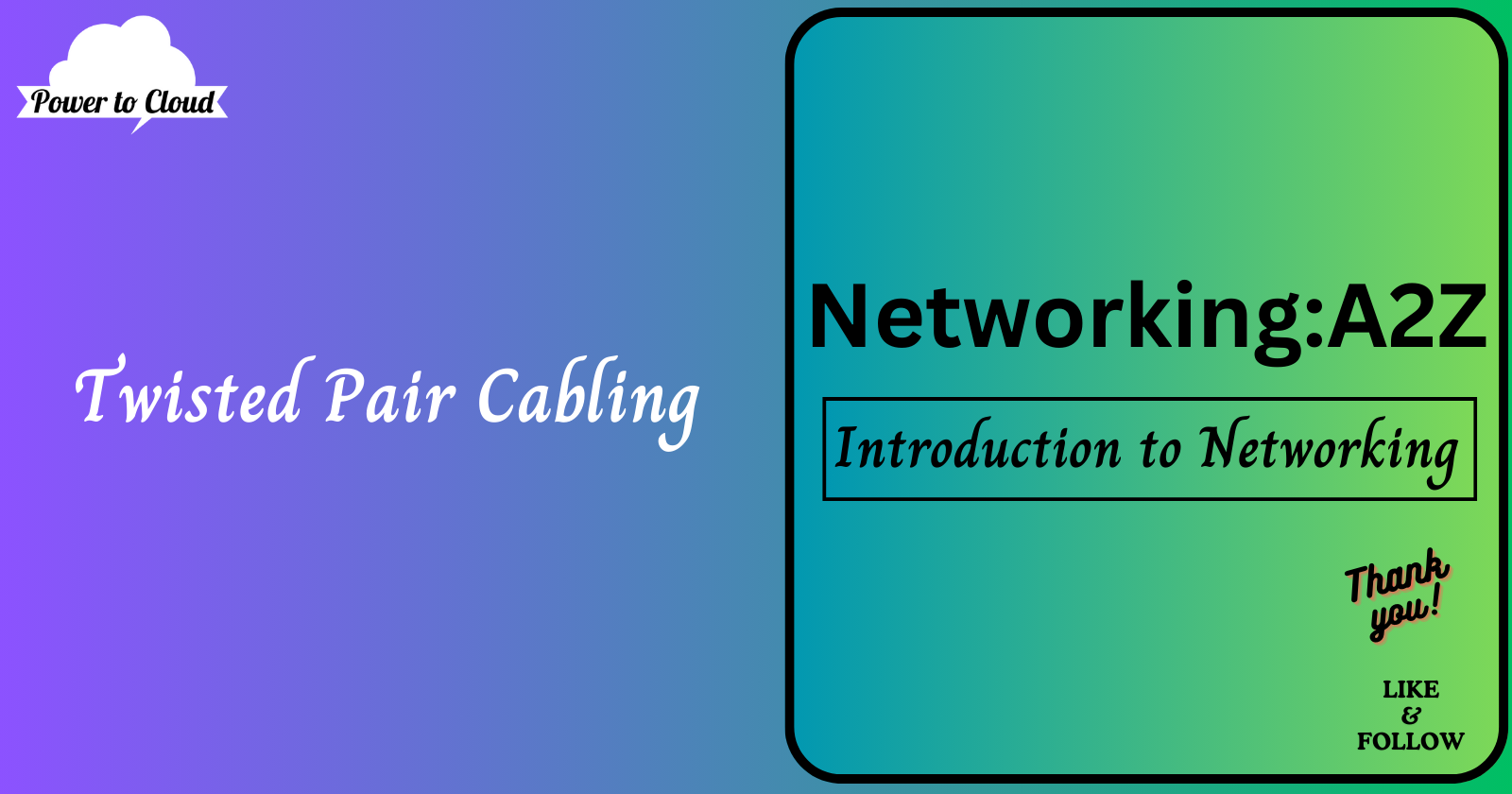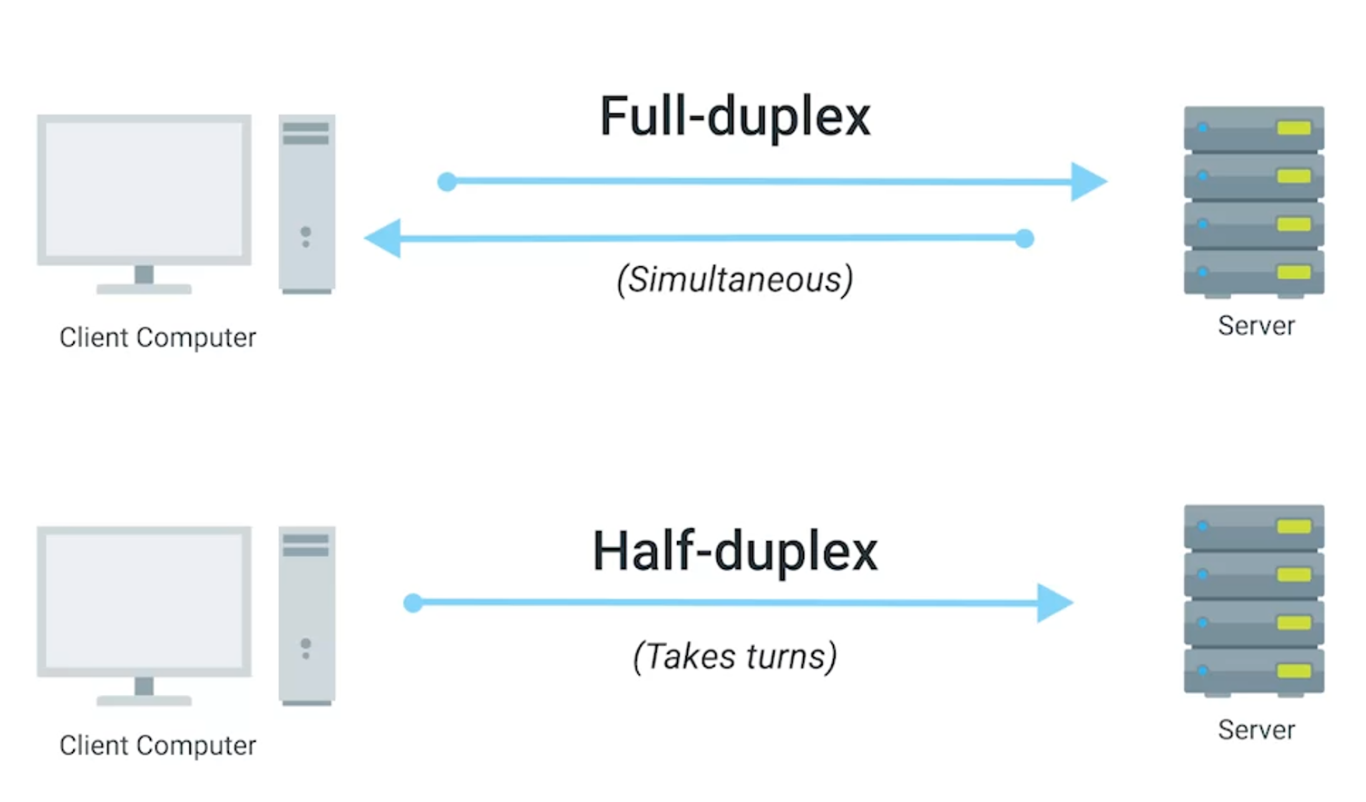1.4 Twisted Pair Cabling
 Vijay Kumar Singh
Vijay Kumar SinghTable of contents

Introduction
Twisted pair cabling is the backbone of modern networking. It is the most commonly used type of cabling to connect computing devices, and its design and structure offer unique advantages that make it a robust and reliable choice for data transmission.
Twisted pair cabling consists of pairs of copper wires twisted together, functioning as a single conduit for information transmission. This unique design helps protect against electromagnetic interference and cross-talk, which are common issues in data transmission. Cross-talk, for instance, occurs when an electrical signal from one cable interferes with another. By twisting the cables together, the chance of cross-talk is significantly reduced, thus ensuring a smoother and more stable transmission of data.
A standard Cat6 cable, a type of twisted pair cable, contains four twisted pairs inside a single jacket, total eight wires. The number of pairs in use depends on the transmission technology. One of the key features of twisted pair cables is their ability to support duplex communication.
Understanding Duplex Communication and Its Types
In the technological world, the term "duplex" often refers to the transmission or communication between devices. It's a concept that's integral to various forms of communication, including telephones, radios, and computer networks. Let's delve into what duplex communication entails and its various types.
What is Duplex Communication?
Duplex communication is a system where information can flow in two directions. It's like a two-lane road where cars (data) can travel both ways. This form of communication is crucial in the world of networking as it allows devices to both send and receive data, enhancing the efficiency and speed of data transfers.
Types of Duplex Communication
Duplex communication can be classified into three types: simplex, full duplex, and half-duplex.
1. Simplex Communication
Simplex communication is the most basic form of communication where data can only flow in one direction, much like a one-way street. This type of communication is used in scenarios where the receiver doesn't need to communicate back to the sender. An example of simplex communication would be a radio or television broadcast, where the station broadcasts signals (sends data) and the audience receives it but doesn't send any data back.
2. Full Duplex Communication
In full duplex communication, data can flow in both directions simultaneously. This is akin to a two-lane road where cars can travel in both directions at the same time. This type of communication is commonly used in telecommunication networks and modern computer networks, enabling devices to send and receive data simultaneously, which boosts overall communication speed and efficiency. An example of full-duplex communication is a telephone conversation, where both parties can talk and listen at the same time.

3. Half Duplex Communication
Half duplex communication is a hybrid of simplex and full duplex. In this system, data can still flow in both directions, but not simultaneously. It's like a single-track road where cars must wait for the road to be clear before traveling in the opposite direction. This form of communication is used in scenarios where full duplex isn't needed or possible. Walkie-talkies are a prime example of half-duplex communication, where only one person can talk at a time while the other listens.
Understanding the concept of duplex communication and its types can help in choosing the right communication system for different networking and communication needs. Whether it's simplex, full duplex, or half duplex, each has its own advantages and is suited to specific scenarios and applications.
In conclusion, twisted pair cabling is a critical component in modern network infrastructure. Its unique design and structure provide effective solutions to common transmission issues, and its support for duplex communication allows for efficient data transfer in both directions. As we continue to rely on digital communication, the importance of understanding and utilizing twisted pair cabling cannot be overstated.
Subscribe to my newsletter
Read articles from Vijay Kumar Singh directly inside your inbox. Subscribe to the newsletter, and don't miss out.
Written by

Vijay Kumar Singh
Vijay Kumar Singh
I'm Vijay Kumar Singh, a Linux, DevOps, Cloud enthusiast learner and contributor in shell scripting, Python, networking, Kubernetes, Terraform, Ansible, Jenkins, and cloud (Azure, GCP, AWS) and basics of IT world. 💻✨ Constantly exploring innovative IT technologies, sharing insights, and learning from the incredible Hashnode community. 🌟 On a mission to build robust solutions and make a positive impact in the tech world. 🚀 Let's connect and grow together! #PowerToCloud